Unlike the armoured vehicles of the past that featured weapon-centric crew-operated platforms focused on mobility, protection, and firepower, modern combat vehicles have become data-centric systems of systems, loaded with sophisticated electronics comprising of sensors, vehicle, and weapon control systems, integrated into a cohesive combat system designed to survive, thrive in and dominate the battlespace by combining information, firepower, and manoeuvre. With the increasing number of electronic systems, automation and autonomy are imperative for Battle Management Systems (BMSs) to enable the crew to deal with the workload and improve the combat capability of the individual vehicle and the entire formation.
Modern combat vehicles rely on sensors for situational awareness. These include video cameras and thermal imagers providing peripheral surveillance at short and long distances, threat warning receivers for lasers, radars, and gunshot detectors, for detecting threats and employing countermeasures against them. Sensors also monitor the primary and secondary weapons to inform the crew what sectors are covered and initiate an automatic response when required. Other systems determine the platform position and orientation, supporting blue force tracking information systems.
Since each system was developed separately, their integration is a daunting, risk-prone, and expensive process. Moreover, without a high level of automation, operating a system-rich platform faces significant challenges in crew training. It poses a cognitive burden on the crew resulting in poor performance under a stressful combat situation.
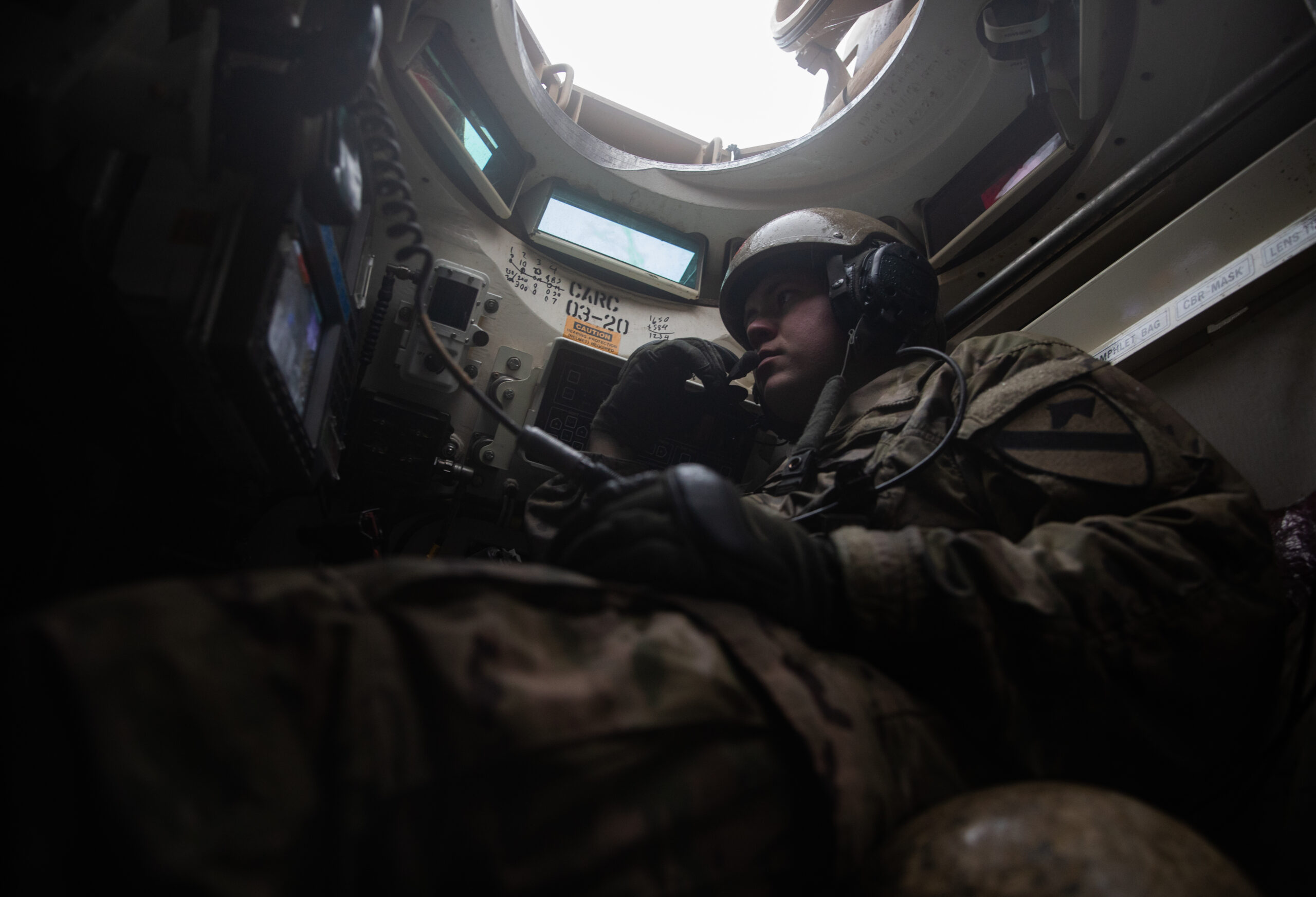
Credit: US Army
For laymen, the digital displays represent the BMS in combat vehicles, but this is a superficial view. In previous articles, this author examined armoured vehicles’ situational awareness trends, particularly for crew members under armour, using digital displays, helmet visors with augmented or virtual reality, digital walls, and virtual windows.
Whatever the display used, the BMS is responsible for providing the information projected to the crew using an optimised human interface and ergonomic design. The goal is to filter, simplify and optimise the information displayed to the junior commanders leading the squad and platoon while presenting a more comprehensive view of the same information to the commander at the company and battalion levels.
BMS Basics
Introducing BMSs in combat vehicles requires integrating hardware, software, communications, and displays. Different interfaces are required to connect the vehicle systems, such as turret and fire control, gun laying, remote weapon station, and active protection system, to name just a few. Key hardware elements also include power distribution and computer systems designed to operate in harsh operational environments.
Communications systems are used to provide data connectivity over wireless networks.
Such systems can rely on legacy combat-net radios, specialised data radios designed to transfer high data rates or new Software-Defined Radios (SDR) that employ specific waveforms to adapt to specific services and support both voice and data or establish Mobile Ad Hoc Networks (MANET). Other communications systems include cellular networks employing LTE and 4G/5G networks adapted to military uses. Position, Navigation, and Timing (PNT) services are also required for network synchronisation and position reporting, essential to maintaining friendly forces’ situational awareness and blue force tracking systems.
The software part of BMSs includes specific services such as a digital map and Geographic Information System (GIS) applications, with services providing terrain analysis, processing a Digital Terrain Model (DTM) to calculate the line of sight and area coverage for position and route planning, Blue Force Tracking (BFT), intelligence pictures depicting known hostile forces. Chat, text messaging, graphics, and freehand drawing help users communicate, dispatch orders, and easily draft reports with minimal reliance on voice communications.
The Power of Standards
Integration of a system at such a scale represents a complex task, especially when it is introduced as part of vehicle upgrades. New vehicles or those undergoing comprehensive electronic systems upgrades often adhere to modern Ground Vehicle Architecture (GVA) standards (such as the US Army VICTORY or NATO-wide NGVA, also known as STANAG 4754). Such architecture offers more efficient integration with common standards, contributing to improved system integration, reducing development time, risk, and costs, saving power and space inside vehicles, and ensuring frequent upgrades are undertaken. Systems supporting open standards also help users avoid vendor lock-in, enabling easier migration to new systems as they become available.
By providing system services, GVA also eliminates redundancy, for example, providing centralised PNT, handling digital mapping and video processing, and optimising performance through load balancing between sensors and signal processors, cloud-based and edge processing, etc. The Netherlands has been a pioneer in this field, with the integration of NVGA-Compliant Vehicle Infrastructure Demonstrator (NCVID). Implemented in a FENNEK scout vehicle and YPR Armoured Personnel Carrier (APC), the system uses a modern mobile data infrastructure developed by TNO and Thales.
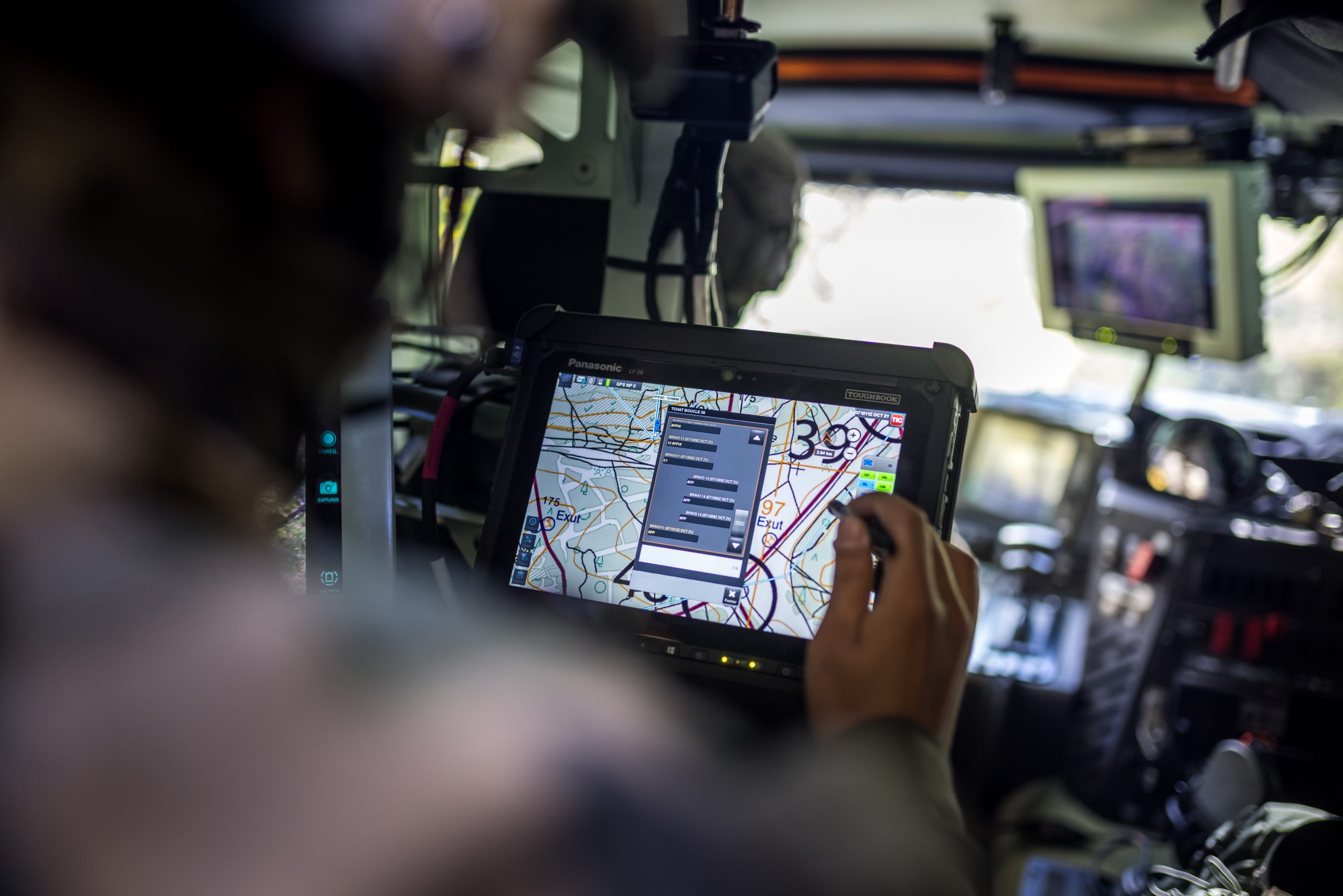
Credit: ATOS
Delivering the situational awareness picture to inform the vehicle and unit commanders requires integrating information obtained from multiple sources including from on board, nearby vehicles, lower echelons, and higher command levels. Operating at the battalion level, the BMS often manipulates this information for presentation to commanders at platoon, company, and battalion levels, as well as vehicle commanders throughout the platoons. Different formats are tailored for the individual user at each level to prevent information overload. Such systems were introduced by several European software developers addressing specific concepts of operations in each nation. Typical examples are the French SCORPION Combat Information System (SICS), developed by Thales and ATOS, and adopted by the Belgian and Spanish Armies; the FACNAV, developed by Teleplan Globe in Norway; the Danish SitaWare FRONTLINE system from Systematic and Elbit Systems’ TORCH-X. The Turkish company Aselsan has also developed the BATUR system, soon to be deployed with the new Altay tanks of the Turkish Army.
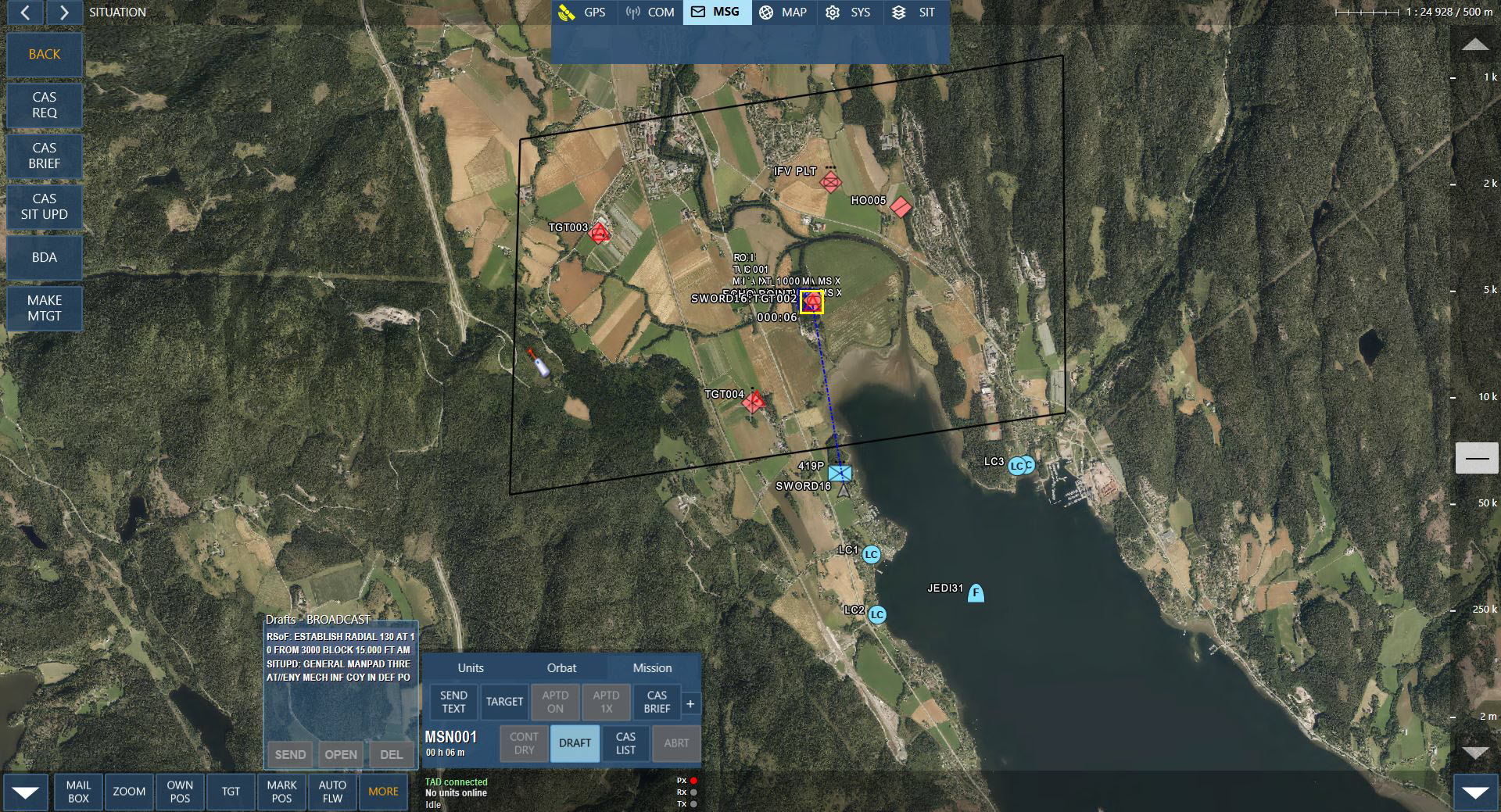
Credit: Teleplan
Vulnerability of Connected Systems
Another example is the combat-proven DELTA. In development by the Centre for Innovation and Development of Defence Technologies of the Ukrainian Ministry of Defence since 2016, DELTA was designed as an intelligence collection and management system.
The system provides comprehensive real-time information with high-level integration of multiple information sources on a digital map to provide commanders at all levels the situational awareness they need. Adapting the system to current technologies and techniques, the system taps Ukraine’s ‘army of drones’ developed and deployed by the non-governmental volunteer group Aerorozvidka. DELTA runs on commercial electronic devices, from laptops to smartphones. The system meets relevant NATO standards to enable close cooperation with allied forces. The system was presented at recent NATO events including Tide Hackathon, Coalition Warrior Interoperability Exercise, and Tide Spirit 2023, demonstrating interoperability with current NATO systems.
Originally designed to utilise Ukrainian military communications, DELTA was placed in cloud storage outside of Ukraine to protect it from Russian cyberattacks. However, that move did not prevent Russian attempts to penetrate the system. The most recent attack was reported by the Ukrainian Computer Emergency Response Team (CERT) on December 22, 2022. The attack included massive spearfishing attempts using email and instant messages with fake warnings directing users to update the DELTA certificates to continue using the system securely. The attack aimed to steal information from the compromised units, including internet browsing data and passwords stored on web browsers.
Relying on commercial equipment such as tablets and smartphones could have attracted this attack. That is why most BMSs and other networked military command and control systems often employ specially hardened militarised equipment that relies on comprehensive supervision and configuration management by military cyber security experts. The networks use secure mechanisms to monitor system behaviour, and distribute software keys and upgrades. These ‘zero-trust’ procedures enable commanders and operators to access information from any device and security level.
Evolving the Digital Landscape
BMSs are part of a broader development trend of Command, Control, Communications, Computers, and Information (C4I) capabilities for battle command in a multi-domain environment. In the US Army, progress has been made with the continued development of the Joint Battle Command Platform (JBC-P), used as the core BMS for the battalion level. The system is expected to receive a major update this year, with the introduction of Mounted Mission Command Software (MMC-S), currently in development. MMC-S will replace JBC-P as a software upgrade. As such, the new system will be installed on existing hardware and networks, introducing a more intuitive graphical User Interface (UI) based on the smartphone-styled Android Tactical Assault Kit (ATAK) that most soldiers already use and like.
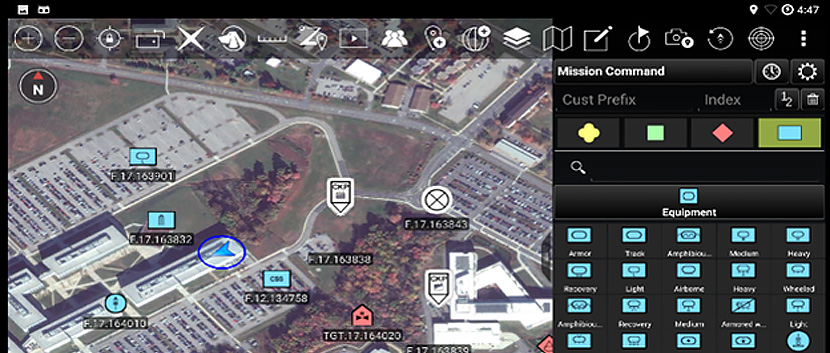
Credit: US Army
Apart from the new UI, messaging, graphical, and mapping services, the MMC-S implements Over-the-air (OTA) updates for maps, software, security patches, and network keys, simplifying information management and distribution. The agile software development process allows for deploying new capabilities to the Operational Force approximately every 12 months. The system provides a Software Development Kit (SDK) framework and infrastructure that enables an application hosting environment for all Warfighting Functions (WfF) and rapid third-party software integration.
European armies will also see the introduction of new generations of BMS, leveraging terrain modelling, Artificial Intelligence (AI), advanced networking capabilities featuring combat clouds, edge computing, and the introduction of robotic and autonomous systems. One such system is the Combat Digital Cloud, a cloud-ready digital platform architecture developed by Thales for the French Army to enable dynamic information exchange and analysis in real time. Utilising rich data compressed into small segments, the system enables efficient transfer over tactical networks, shortening decision-making processes from minutes to seconds.
These techniques enable continuous information sharing and augmented situational awareness shared by all levels of command. Thales’ digital combat platform will leverage the integration of sensors and effectors on board and integrate unmanned aerial and ground vehicles and dismounted troops, thus broadening the reach and utilisation of BMS across the battlegroup. UI will also embrace modern trends, including augmented reality, for a more intuitive handoff of target information and enable commanders to collaborate over a virtual networked 3D ‘digital sandbox’ for mission planning and debriefing.
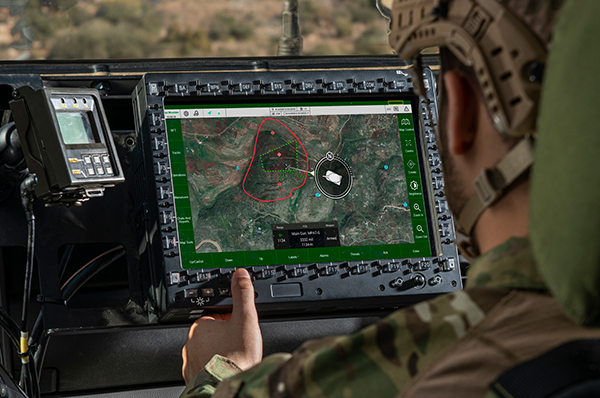
Credit: Elbit Systems
The Israeli Army has also embraced advanced digital tools. Fielding the new generation of TORCH-X enabled the accelerated introduction of efficient decision-support tools, targeting, and employment of firepower in a multi-domain environment. TORCH-X is now configured to optimise battle command from the division to platoon level, supporting different applications, including mounted, dismounted, joint fires, and manned-unmanned warfighting environments. Each configuration utilises task-optimised hardware, software, and communications equipment.
The systems configured for dismounted operations feature decision support tools to reduce the soldier’s cognitive load by improving orientation, recommending movement routes for navigation, resupply, casualty evacuation, and locating optimal vantage points for observation. The system collects and stores the soldier’s physiological data and alerts the soldier and chain of command when the unit approaches its combat effectiveness threshold.
Other systems are optimised for the operation of manned-unmanned formations. Designed to support a wide range of manned-unmanned teaming (MUM-T) operations, TORCH-X RAS enables connectivity and control of Robotic and Autonomous Systems (RAS) in the air, sea (surface and sub-surface), and land (terrain and sub-terrain), extending the range and reach of warfighters and enhancing their performance in all domains.
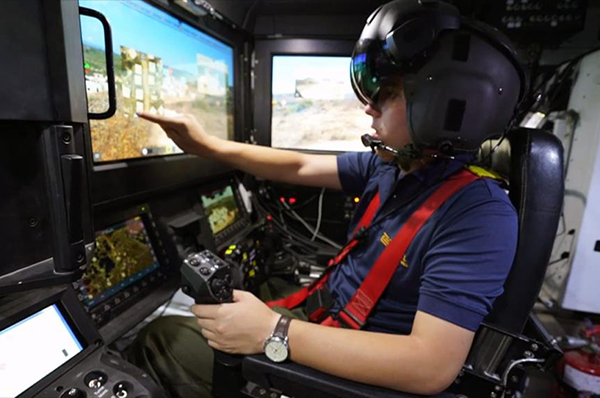
Credit: Israeli MoD
With the evolution of Artificial intelligence (AI), systems are becoming more authoritative in presenting options and suggesting best practices for operators and commanders to choose from. An example of such system is the Israeli Fire Weaver developed by Rafael and adopted by the IDF. The system is employed as a software layer with existing BMSs to provide the ability to maximise available combat power in GPS-denied environments. It networks sensors and formations, using augmented reality to present intelligence over the battlefield scene or map to provide a digital common operational picture (COP) shared by all participants. The result is intuitive situational awareness and common visual language between sensors and shooters, reducing the latency of sensor-to-shooter loops to a few seconds. The German Army is presently evaluating the system under its ‘Glass Battlefield’ study. Rafael has also demonstrated the system to the US Army.
Another trend resulting from AI capabilities is improving the use of heterogeneous firepower in a multi-domain environment. The US Army is interested in optimising the ability to employ heterogeneous weapons in salvos, coordinated to deliver effects on target in a synchronised manner. Deploying indirect weapons in such dynamic contexts is beyond human cognitive abilities. The Army could turn to AI-based decision support tools to weigh the relative value of numerous options, calculate the predictive success of each option, and perform the required tasks under extremely short timescales.
The tactical environment can become highly complex depending on the threat, the operational tempo, and unexpected events. With BMSs connected to the combat cloud, systems are informed of operational plans, enemy positions and can monitor the situation of combat formations, down to the individual vehicle level via sensors and warning systems. AI decision-support tools can reduce cognitive load. Embedded in BMS systems, AI can help commanders make the right decisions in complex military tactical environments by evaluating thousands of options and recommending the few with the highest potential gain.
Tamir Eshel











